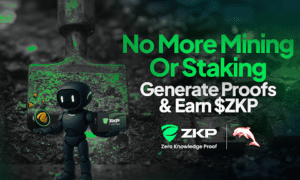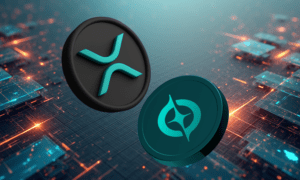The world of finance isn’t always about suits, charts, and stock tickers. Sometimes, it’s pixels and potions. No joke video games have been quietly building financial systems that rival some of the clunkiest parts of traditional banking. Now, with crypto and Web3 in the mix, the overlap between games and real money is getting harder to ignore.
And just so you don’t think we’ve veered into betting or casino talkthis isn’t that. Though in some corners of the internet, people toss around game tokens like they’re chips on a poker table, this space is deeper. It’s economic, yes, but it’s also cultural. From Fortnite to Axie Infinity, in-game currencies are becoming test labs for real-world financial behavior. The kind that could shake up how we all earn, spend, and value digital assets.
That’s why the smartest traders and builders I know, especially the ones offering the best expert betting views on risk and reward, are paying close attention to games. Not just for entertainment, but for the economic signals buried inside them.
Let’s talk about how games are turning into financial playgrounds, and why that matters more than most folks think.
When Play Becomes Pay
First, let’s rewind a bit. For decades, games have had their own currencies, gold coins, credits, V-Bucks. These weren’t new ideas. Monopoly money existed long before Roblox. But something shifted when games started letting players earn those coins through effort, and sometimes, sell them for real money.
World of Warcraft was one of the earliest examples where players turned farming gold into a side hustle. Entire economies were built inside that game. It got so real that in some countries, governments debated whether those virtual earnings should be taxed. That conversation still isn’t settled.
Fast-forward to now, and Web3 games like Star Atlas, Pixels, and Shrapnel are pushing things even further. These aren’t just games with made-up currencies. These are games with tokenized assetsNFTs, governance tokens, and treasury-backed in-game banks. The idea is simple: let players own what they earn. But the ripple effects are anything but simple.
Suddenly, kids in the Philippines could earn more from breeding Axies than from working retail. People started tracking guilds and token prices like they would crypto startups. Whole ecosystems formed around staking, lending, and farming in-game assets. And that’s when it hit: the line between a game and a job got blurry.
The Game as a Micro-Economy
Let’s break it down. Any good game with a token-based system has the bones of a real economy:
- There’s labor (the player grinding levels).
- There is capital (NFTs, weapons, land).
- There’s trade (marketplaces for selling assets).
- There’s inflation (when too many tokens flood the system).
- And there’s even governance (players voting on game rules or token policies).
These micro-economies are wild to watch. Some collapse due to poor tokenomics. Others adapt quickly, tightening supply or rewarding long-term players to reduce churn. It’s not always perfect but it’s fast. Way faster than what happens in Wall Street boardrooms or central bank meetings.
Take Pixels, one of the leading social farming games on Web3. Its token, PIXEL, saw an explosion of interest after Binance listed it. But what made Pixels interesting wasn’t just speculation, it was the fact that players could farm, trade, and build land-based economies in a fully tokenized world. That game is teaching people how DeFi works without ever calling it DeFi.
Then there’s TreasureDAO, an entire network of games with a shared currency called MAGIC. Instead of each game building its token, they use one across all projects. This kind of interconnected economy is a glimpse into what cross-game finance might look like, how different states use the same U.S. dollar but have unique industries.
Why Traditional Finance Should Care
Now here’s the kicker. These game economies are doing something banks, fintechs, and even some crypto protocols struggle with: they create user engagement from day one. People don’t just use these systems, they live in them. They obsess over land prices, token utility, farming strategies. They don’t need to be convinced to stay, they’re hooked.
Compare that to your average mobile banking app, which fights tooth and nail to keep user retention above 20%. In gaming, daily active usage isn’t the goal, it’s the baseline.
And when you zoom out, the metrics get even more interesting. Some in-game tokens are traded on centralized exchanges with real liquidity. Some game guilds manage assets worth millions of dollars. Some of the top creators in gaming ecosystems earn more than junior investment analysts at hedge funds.
In short, gaming is becoming a launchpad for next-gen financial behavior. Young people aren’t learning about savings accounts, they’re learning about liquidity pools, staking, and token farming through games. And that shift in mindset could shape how the next generation interacts with real finance.
The Risks Are Real Too
Hype
Let’s not sugarcoat it this space is messy. Many play-to-earn models have collapsed under their own hype. Axie Infinity was flying high until its tokenomics broke and its economy spiraled. People lost money. Trust was damaged.
Speculation
And then there’s the problem of speculation. When a game’s token becomes too valuable too quickly, it stops being about the game and starts being about trading. That breaks the fun. And when the fun dies, the economy dies too.
So, builders in this space are learning. They’re experimenting with dual-token systems, caps on rewards, and real player governance to avoid previous pitfalls. There’s no one-size-fits-all answer yetbut that’s the point. These ecosystems are like financial sandboxes where failure is fast and lessons are immediate.
Where It’s All Headed
What we’re seeing now is just the early draft. The next wave will be games that don’t just run their economies but plug into broader financial rails.
Imagine playing a game where your farming rewards are tokenized, sent to your self-custody wallet, and automatically deposited into a yield-generating vault. Or buying a sword in-game that acts as collateral for a micro-loan. These are already being prototyped. The lines between player, trader, and banker are starting to blur.
Eventually, we may not even call them “games” anymore. Just like we don’t think of social media platforms as “digital bulletin boards,” we won’t think of Web3 games as just playtime. They’ll be alternative financial systems designed to be fun, sticky, and profitable.
And maybe, just maybe, they’ll teach us something about how to build better financial products in the real world. Products that are more transparent, user-owned, and community-driven.
Final Thought
Games are the sneaky edge of financial innovation right now. They’re messy, playful, and sometimes chaotic but they’re real. And for anyone trying to understand the future of money, ignoring what’s happening in these digital playgrounds would be like ignoring the internet in the ‘90s.
So, next time someone says, “It’s just a game,” smile and know they’re probably missing the start of something much bigger.



































